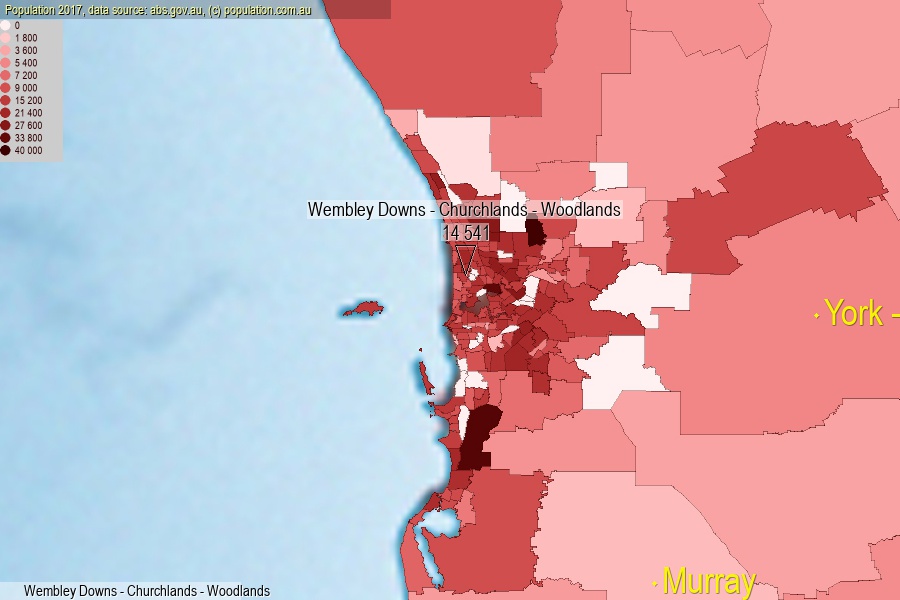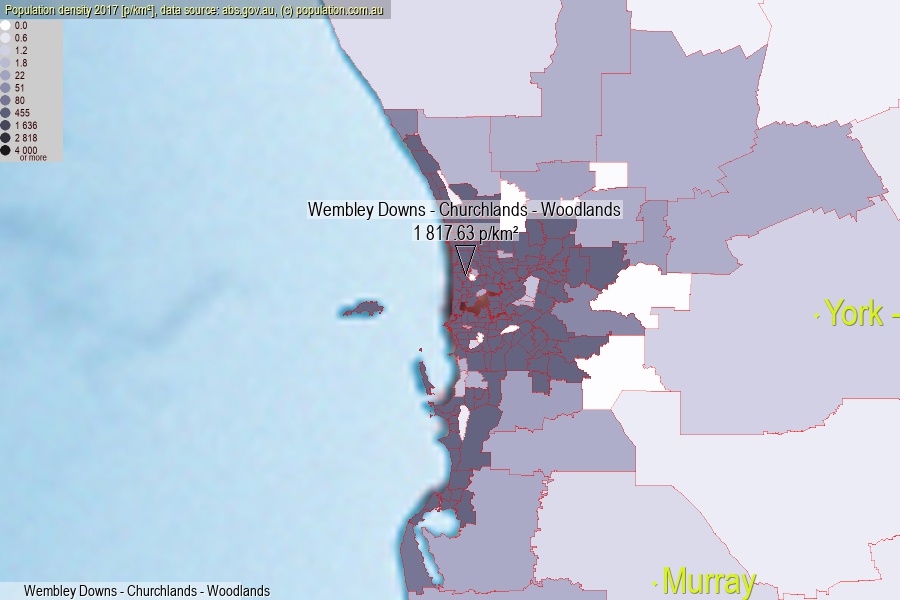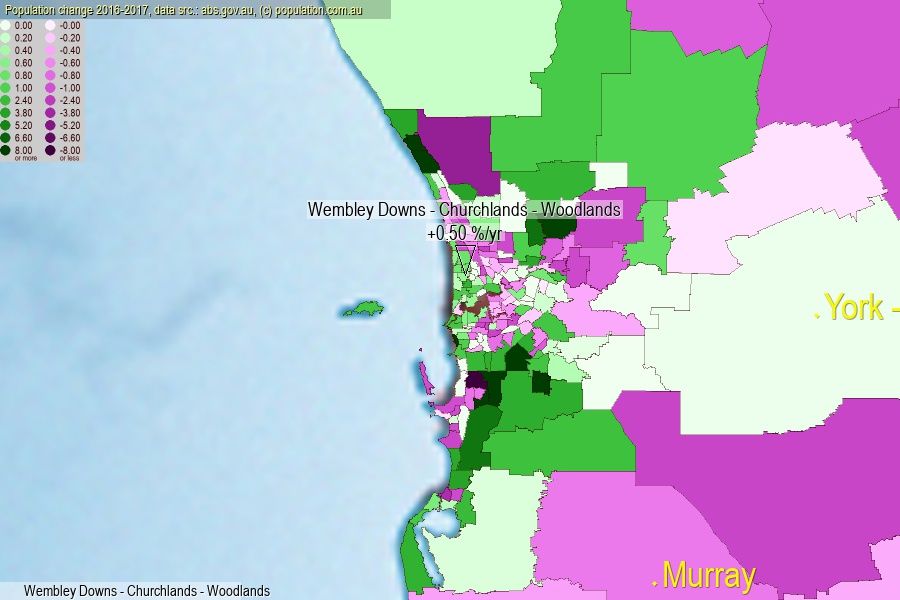 population.com.au
population.com.auLast official estimated population of Wembley Downs - Churchlands - Woodlands (as Statistical Area Level 2) was 14 541 people (on 2017-06-30)[2]. This was 0.06% of total Australian population and 0.561% of WA population. Area of Wembley Downs - Churchlands - Woodlands is 8.00 km², in this year population density was 1 817.63 p/km² . If population growth rate would be same as in period 2016-2017 (+0.5%/yr), Wembley Downs - Churchlands - Woodlands population in 2025 would be 15 138. [0]



Click to enlarge. Wembley Downs - Churchlands - Woodlands is located in the center of the images.
Population [people], population density [p./km²] and population change [%/year] [2]
View borders » (new window) [4]
[1991-1992] 0.00 %/Yr.
[1992-1993] -0.52 %/Yr.
[1993-1994] -0.47 %/Yr.
[1994-1995] -0.41 %/Yr.
[1995-1996] +0.26 %/Yr.
[1996-1997] +0.94 %/Yr.
[1997-1998] +0.70 %/Yr.
[1998-1999] +0.77 %/Yr.
[1999-2000] +0.81 %/Yr.
[2000-2001] +1.14 %/Yr.
[2001-2002] +0.19 %/Yr.
[2002-2003] +0.22 %/Yr.
[2003-2004] +0.93 %/Yr.
[2004-2005] +0.62 %/Yr.
[2005-2006] +0.71 %/Yr.
[2006-2007] +1.07 %/Yr.
[2007-2008] +1.42 %/Yr.
[2008-2009] +2.31 %/Yr.
[2009-2010] +1.26 %/Yr.
[2010-2011] +1.35 %/Yr.
[2011-2012] +4.30 %/Yr.
[2012-2013] +2.61 %/Yr.
[2013-2014] +0.79 %/Yr.
[2014-2015] +0.26 %/Yr.
[2015-2016] -0.39 %/Yr.
[2016-2017] +0.50 %/Yr.
[0] Calculated with linear interpolation from officially estimated population
[1] Read more about SA2 and Australian Statistical Geography Standard (ASGS) on abs.gov.au
[2] Population data from Australian Bureau of Statistics (Population and density: 2017; change: 2016-2017)
[3] Digital Boundaries: Australian Statistical Geography Standard (ASGS) 2016.
[4] Border coordinates are simplifyed using Ramer-Douglas-Peucker algorithm.